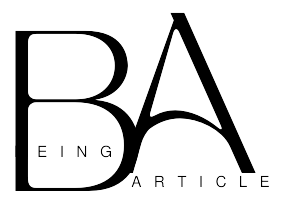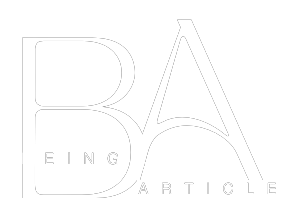How To Say Latkes?
Latkes are pronounced as “lot-cuz.” The word originated from Yiddish, a language spoken by Ashkenazi Jews. Latkes are potato pancakes traditionally eaten during Hanukkah, a Jewish festival of lights. The dish is made by grating potatoes and mixing them with eggs, flour, and spices before frying them in oil until crispy. The dish is typically served with applesauce or sour cream.
Latkes are popular party food, especially during Hanukkah. They’re made from a batter of potatoes, onions, eggs, flour, or matzo meal and are fried in oil.
To pronounce latkes correctly, you must understand they’re pronounced as “lah-takes.” The emphasis is placed on the second syllable, and the “t” and “k” are pronounced hard.
What does latkes mean in hebrew?
Latkes are a very popular food in Jewish cuisine, especially during the holiday of Hanukkah. It is made of chopped potatoes, onions eggs and flour, which are then cooked in oil until crispy and golden. While latkes are an extremely well-known food in Jewish food, their names and their origins aren’t widely recognized. The following article we’ll look into what the word “latkes” is for in Hebrew and the story behind the dish that is so beloved.
What’s the meaning behind the word “latkes” in Hebrew?
Latkes (labiybah) is a Hebrew word. Hebrew is used to describe an fried pancake like the food which is often referred to by the name of latkes English. Latkes comes of an Yiddish word latke. It is derived in the Russian word latka which means “a small, flat cake.” In Hebrew Latkes can be known as levivot (lbiybvot) that also refers to “pancakes.”
The History of Latkes
Latkes’ origins can be traced into the Jewish communities in Eastern Europe. According to legend, latkes were initially created to commemorate Hanukkah which is which is the Festival of Lights. The holiday celebrates the wonder of the oil, in which a tiny amount of oil which should be used for just one day, managed to light the menorah for eight whole days.
Latkes, fried foods are a favorite way to mark Hanukkah since they represent the power of oil. Latkes in the beginning were created from leftover onions and potatoes combined with eggs and then fried in oil. In time, the latkes were an integral part of Jewish cuisine , and later became popular in other parts of the world.
Variations of Latkes
Latkes traditionally are made of grated onions and potatoes There are many variations of this recipe. Many people prefer adding additional vegetables, such as carrots or zucchini in their latkes. Some prefer Butternut squash or sweet potatoes in place of the regular potatoes.
Alongside the various kinds of vegetable, there’s variations on how the latkes are cooked. Some people include herbs such as rosemary or thyme. However, others prefer to cook using just the addition of salt or pepper.
Latkes as a Symbol of Tradition
Latkes are much more than an amazing food They’re also an expression of community and tradition. A lot of families have their own unique recipe for latkes which has been handed through generations. Making latkes as a family is a great as well as meaningful method to mark the Christmas season and bond to one’s heritage.
Latkes are a traditional dish of Jewish cuisine with long history and a symbolic significance. If you like traditional potato latkes or prefer a more innovative variant, this dish can be an excellent way to mark the holidays and be connected to one’s heritage.
How to pronounce sufganiyot?
If you’re unfamiliar with Hebrew the pronunciation of certain words may be difficult. One of these words can be “sufganiyot” (svpgnyvt), that is a well-known Jewish dessert consumed on the occasion of Hanukkah.
- Learn what is the Hebrew Alphabet Before we dive in to pronunciations of “sufganiyot,” it’s important to comprehend what is the Hebrew alphabet. Hebrew has been written left to right and is composed in 22 characters. Some of the letters have distinctive sounds that are not found in English. For instance, the letter “TS” (tsadi) is pronounced the same way as”tz” in “pizza,” for instance “tz” in “pizza,” and”H,” the first letter, is sounding like “ch. “H” (het) is sounding like”ch. “ch” in “Bach.”
- Take It All Down term “sufganiyot” is made up of four Hebrew letters: (samech), v (samech) and the letter v (vav) and”p” (peh) and the letter g (gimel). Each letter have a distinct sound. The first letter, s is pronounced as”the “s” in “sun.” A second letter, called v is pronounced as”oo,” which is the “oo” in “moon.” Third letter, called p is pronounced as”pot. “p” in “pot.” Fourth letter, called g is pronounced the same way as”go”‘s “g” in “go.”
- Get It All Together Now knowing the sounds of each letter, you are able to combine them to create “sufganiyot.” The first vowel, “suf,” is it’s pronunciation is similar to “soof,” with a long “oo” sound. The second syllable “ga,” is pronounced similar to “ga” in “garden.” The third syllable “ni,” is pronounced similar to “nee.” The last syllable “yot,” is pronounced as “yote.”
- Practice Makes Perfect The most effective method for you to master your pronunciation “sufganiyot” is to practice using it. It is also helpful to take a listen as native Hebrew people speak”sufganiyot” to gain an understanding of how it will sound. Another option is breaking the word into syllables, and then practice speaking each one individually before you put them all together.
What country did latkes originate from?
Latkes, which are a popular Hanukkah dish, are potato pancakes served with apple sauce or sour cream. They are crispy on the outside as well as a warm, fluffy interior that makes them a favorite food during the winter holiday season. What is the origin of latkes from?
- The origins of Latke Latkes Latke Latkes have their origins in the Jewish communities in Eastern Europe, specifically in the present-day Belarus, Ukraine, and Poland. These regions were predominantly agricultural and potatoes were a common crop. The first documented recipe for latke is in the 16th century book “Kuchenmeysterey” by German chef Marx Rumpolt.
- The role of Hanukkah latkes are now synonymous with Hanukkah, they weren’t originally a traditional Hanukkah meal. Actually, the custom of eating fried food at Hanukkah was originally a means to honor the miraculous oil which burned for eight weeks in the Temple following the Maccabean Revolt. The oil is usually depicted through fried dishes such as sufganiyot and latkes.
- Different varieties Although potato latkes are the most well-known variant of this dish there are numerous varieties of latkes. A few of the most common variations are zucchini, sweet potato, carrots, and even cheese latkes. Each variant is unique in its taste and texture, making them a dish that can be enjoyed all the season.
- Latkes Around the World Latkes could have come from Eastern Europe, but they have since been spread across all over the world. In Israel Latkes are typically made using grated onions, and are served with applesauce and sour cream. When it comes to the United States, they are usually served during Hanukkah which is a common food item featured on menus in restaurants. In Australia latkes are usually consumed with the smoked fish, or as a side dish during breakfast.
- The symbolism of latkes goes beyond their delicious flavor Latkes also carry symbolic meaning in Jewish cultural practices. The cooking of the latkes symbolizes the miraculous power of oil and the shape of the latke is a symbol of the cycle throughout the calendar year. Additionally the grating of potatoes symbolizes the work required to overcome hardship which is at the heart of the tale of Hanukkah.
FAQ’s
How do you pronounce latkes?
The pronunciation of latkes is “LOT-kuhs.” The “a” is pronounced like the “a” in “cat,” and the “e” is pronounced like the “e” in “bet.”
Is the “t” in latkes silent?
No, the “t” in latkes is not silent. It is pronounced as “t.”
What is the origin of latkes?
Latkes are a traditional Jewish dish that originated in Eastern Europe, specifically in countries like Poland, Russia, and Ukraine.
What are latkes made of?
Latkes are typically made of grated potatoes, onions, eggs, flour or matzo meal, salt, and pepper. They are fried in oil until crispy.
Are latkes only eaten during Hanukkah?
Latkes are traditionally eaten during Hanukkah, but they can be enjoyed year-round as a delicious side dish or snack.
How are latkes served?
Latkes are often served with applesauce and sour cream as toppings, but they can also be enjoyed plain or with other toppings of your choice, such as smoked salmon or c



















